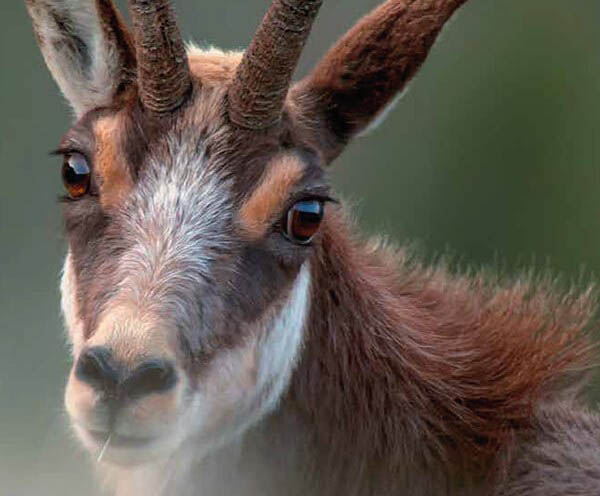Chamois
The symbol of the Dolomites
Chamois are rarely present in the codified culture. Despite this, we have to consider an important fact: a symbol can be… invented. Today.
Animals are symbols. In our mind, they represent action, desire, quality, and ways of being: let us think about domestic animals. Wild animals have more power: strength, solidity, purity, pride and courage. Considering these aspects, chamois have been underestimated, and they are not mentioned in myths. Let us give these animals what they deserve, because symbols
can change.
Chamois are very important for Alpine people, and not by accident. They did not extinguish as other animals, they resisted on the Alps. They resisted because they are athletes. Moreover, they cover incredible height differences during a very short time period; they climb with their hoofs on vertical faces, they jump, they feel safe at every slope.
Chamois are good friends of human beings. They do not only represent an enrichment for the mountains, they educate as well. Through them, the beauty of the environment is increased, they cause admiration, they affect sensibility, and they represent beauty. A living landscape, which arises curiosity and lets us think, a show. Chamois run in the mountains, they play, they perform. They are a cheerful force of nature, acrobats. Thanks to chamois, human beings become nicer, and this is important.
On the Dolomites, chamois are added values, inserted in amazing colours and unique landscapes. In an emblem, chamois should be divided into three parts: light blue of the sky, pink of the rocks, white of the snow; starting from these three colours, chamois stand out. Chamois represent the meeting point of three excellences integrated in a unit, the Dolomites.
Symbols have a history; they have mothers and fathers, creators and faithful followers. They represent a hope for the future, without forgetting the past, because they unite communities in a common project. Creating a symbol means living longer, or forever.
Franco Perco (traduzione Sara Covelli)
credits:
foto1: You are left breathless in front of this picture that shows the sweetness of the eye of the chamois. (© Bruno Boz – www.brunoboz.com)




